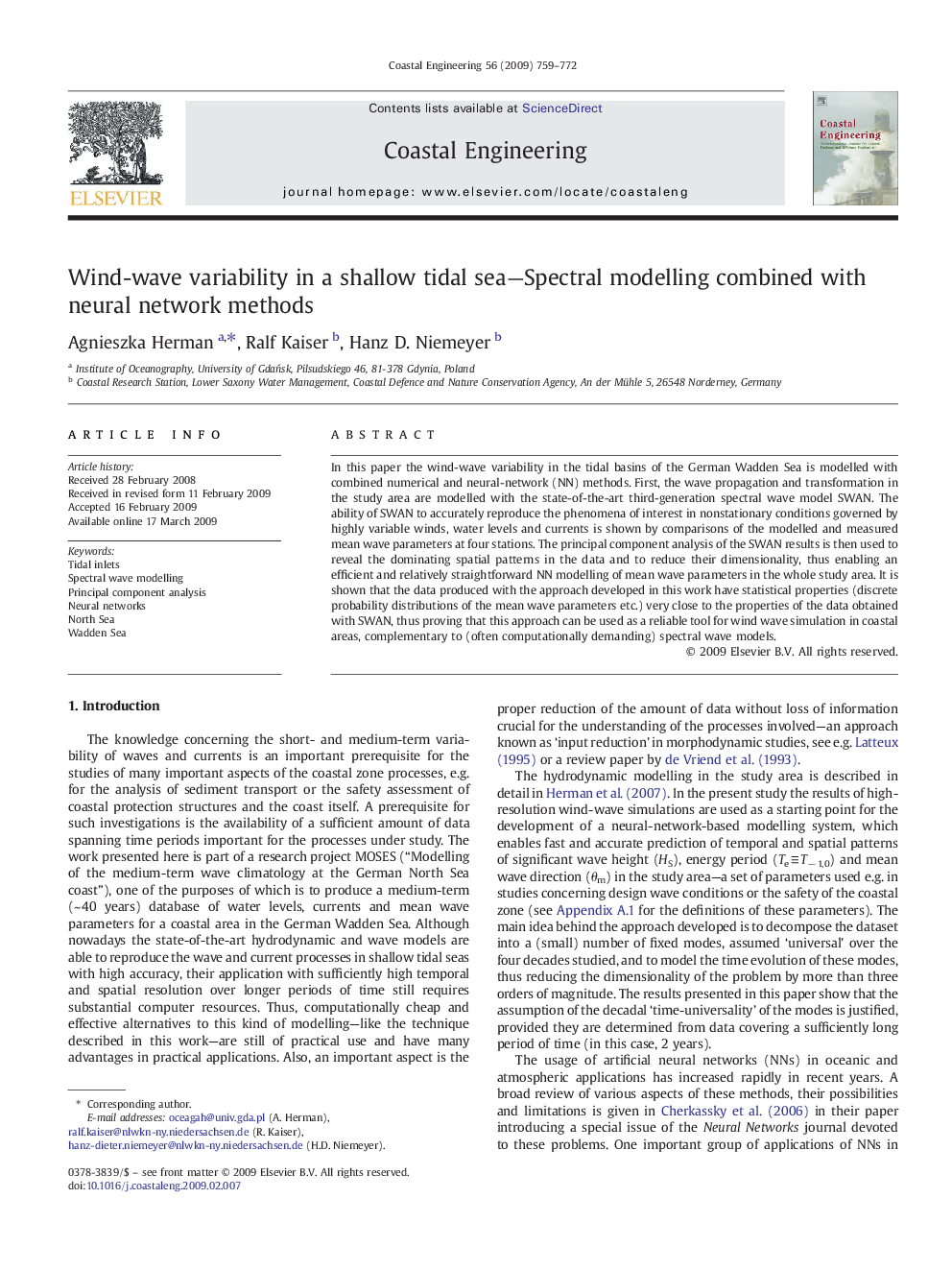| Article ID | Journal | Published Year | Pages | File Type |
|---|---|---|---|---|
| 1721518 | Coastal Engineering | 2009 | 14 Pages |
In this paper the wind-wave variability in the tidal basins of the German Wadden Sea is modelled with combined numerical and neural-network (NN) methods. First, the wave propagation and transformation in the study area are modelled with the state-of-the-art third-generation spectral wave model SWAN. The ability of SWAN to accurately reproduce the phenomena of interest in nonstationary conditions governed by highly variable winds, water levels and currents is shown by comparisons of the modelled and measured mean wave parameters at four stations. The principal component analysis of the SWAN results is then used to reveal the dominating spatial patterns in the data and to reduce their dimensionality, thus enabling an efficient and relatively straightforward NN modelling of mean wave parameters in the whole study area. It is shown that the data produced with the approach developed in this work have statistical properties (discrete probability distributions of the mean wave parameters etc.) very close to the properties of the data obtained with SWAN, thus proving that this approach can be used as a reliable tool for wind wave simulation in coastal areas, complementary to (often computationally demanding) spectral wave models.
